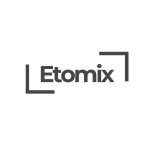
Procurement Savings and Avoidances – How To Report Them Accurately?
What’s the difference between Procurement Cost Savings, Avoidances and Total Contribution and why does it matter?
Procurement savings are a financial measure of a reduction or lessening of costs of products and/or services purchased. Typically the cost baseline is a previous year’s price, but may also be a budget, estimate or planned expense multiplied by a quantity purchased in the same period. Typically business track savings performance of both Procurement and Production (manufacturing department) – in the rest of this blog we will be focusing on Procurement only.
Cost Savings compares previous year’s average cost per material with the current financial year’s actual cost for exactly the same material.
Procurement Savings – Definition
- Cost savings are calculated as a difference between previous year’s cost and new cost (Price X Quantity) and have a direct financial impact on the P&L statement. Previous cost is the previous year’s price (last reasonable price) multiplied by quantity purchased.
- If there’s no price available within last 12 months from the Savings reporting time, then the part/service purchased shall be treated as “new” and entered as Budget cost and consequently reported as Cost avoidance.

Procurement Avoidances – Definition
- No previous price available within the last calendar year
- New part being purchased for the first time
- Prototype
- Comparing Sales budgets/estimates VS the actually paid price
- Credit note, early payment discount, yearly volume rebate
- Capex avoidance
- Avoided cost increase – Improving the lowest quote even further but still paying more than the previous year’s price
Clear Procurement Savings Definitions Are Essential
Clear procurement savings definitions are essential for ensuring transparency, enhancing accuracy, and facilitating better decision-making. They enable consistent tracking and measurement of savings, drive accountability, and improve reporting to stakeholders. Additionally, clear definitions support strategic planning by aligning procurement goals with broader business objectives, and boost efficiency by streamlining processes and focusing efforts on impactful areas.
Having a clear understanding of the above is essential for any Business that wants to get serious about transparent savings planning and reporting. It is of utmost importance to establish clear definitions and processes for the reporting purposes and implement these quickly. Any vagueness in this area typically results in savings over reported and similar errors that ultimately lead to Procurement department losing credibility in the business and not being taken seriously anymore. Additionally it can also lead to constant discussions about the source of reported numbers, whether they are right or wrong and so on.
All this can be simply stopped by clear procurement savings definitions, processes and using the best savings planning, tracking and reporting tools instead of Excel and similar tools. Contact us and let us help you get your Savings reporting, tracking and planning to the Best in class levels.


